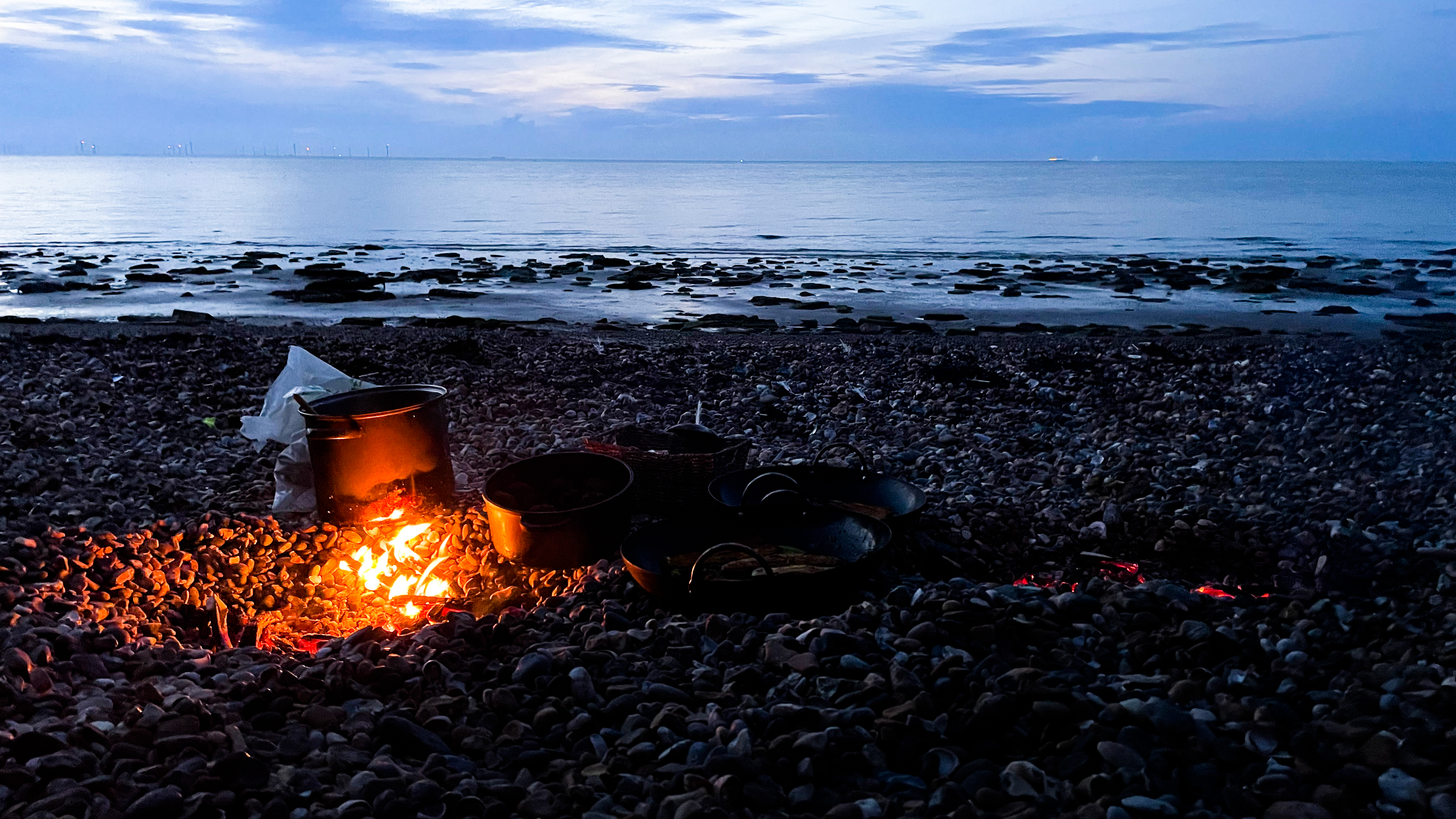Joe's Birthday Foraging Frenzy
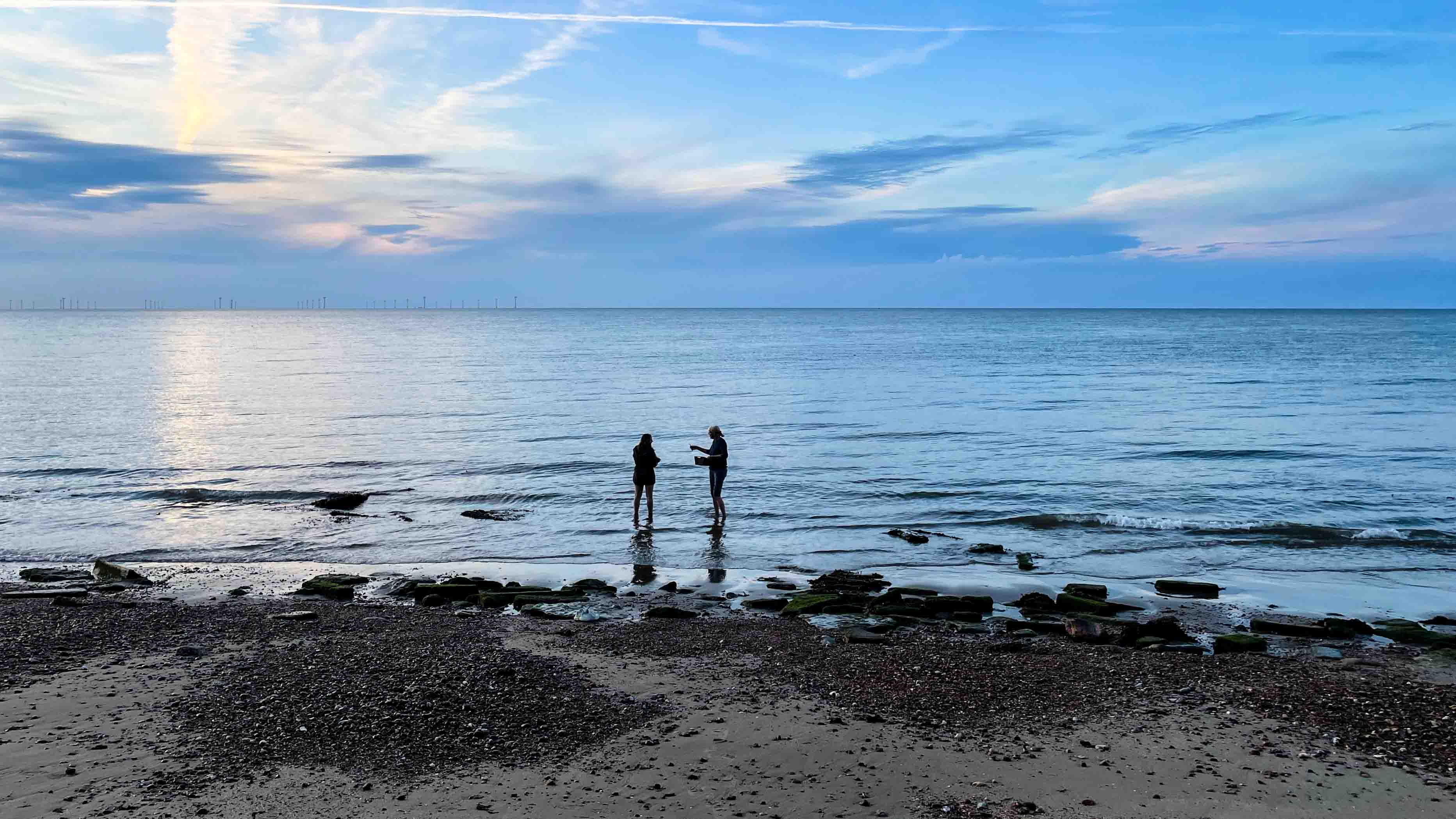
For my 30th birthday my friends bought me a day out with the foraging fanatic Fergus Drennan and what a day it was! It ran from 08:30 until 22:00 and was rammed full of quirky tastings, information overloads, and fruitful foraging.
The Park
After meeting at the train station we all piled into three cars and headed down to the park. Fergus sat us down in a circle beside a pond full of mace reed and started removing numerous berries on their branches from his backpack. The question was simple, edible or not? This quickly revealed that we were all very much amateurs but it did bring the hype which grew all day long! Fergus then gave us each a mace reed head and explained that the whole plant was edible throughout the different seasons. In spring, the new shoots can be harvested and taste like leek and if you really want to, the tuber can be cooked and the starch extracted, which is basically potato. Fergus was building up to tell us a story of how he once tried to see how many mace reed heads would be required to fill a duvet, which turned out to be 350, however, this wasn’t the story. He had filled the duvet and had been using it for a while when one night the duvet became alive. It turns out that the The mace is a popular nesting spot for a certain moth so, after a couple of nights the eggs hatched and thousands upon thousands of small moth larvae started crawling out of the duvet. CAN YOU IMAGINE THIS?!?!?
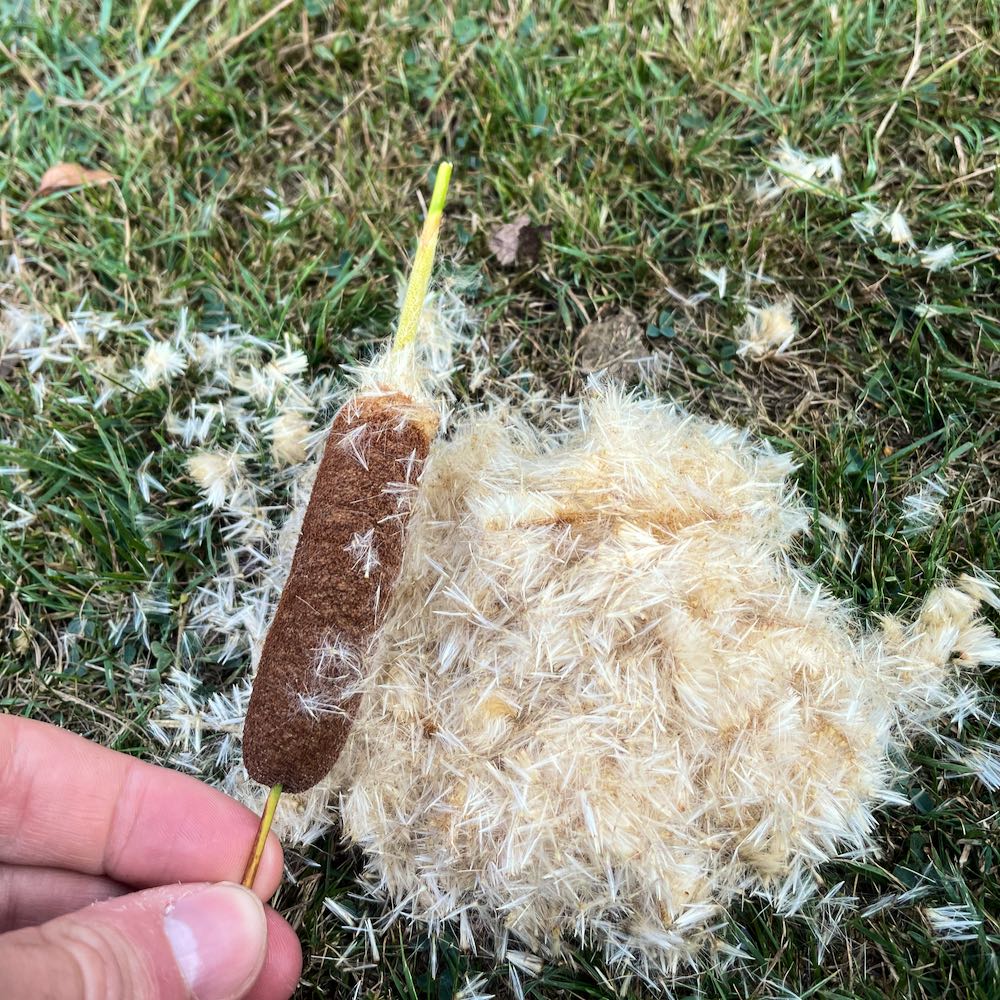
The Foraging Begins!
Our first task! Go and gather as many hawthorne and blackberries as possible, making sure to only get the reddest of hawthornes as we are going to make wild ketchup and a set jelly. We are all given a little wicker basket and sent to different parts of the park. I’ve picked enough blackberries in my time so I headed to the hawthorn trees of which there were plenty! Fast forward twenty minutes or so and we gather beneath an oak tree and begin the ketchup making process.
Ketchup
Ingredients
- ⅓ berries
- ⅓ Blackberry
- ⅓ Hawthorn berry
- ⅓ Plum or Damson
- ⅓ caramelised onions
- ⅓ apple cider vinegar
- a spalsh of 4x concentrated elder berry juice (the amount you would use to make a cordial drink)
Method
- Mash the hawthorne berries until seed is removed from all berries
- Add the blackberries and plumb and mash into a liquid
- Strain the mash through a sieve into a container
- Add the onions and apple cider vinegar
- optional - add 4x concentrated elderberry juice
- mix and pour into kilner jar
- optional - put in oven for 40 mins at 90 degrees to sterilise if made in an outdoor environment
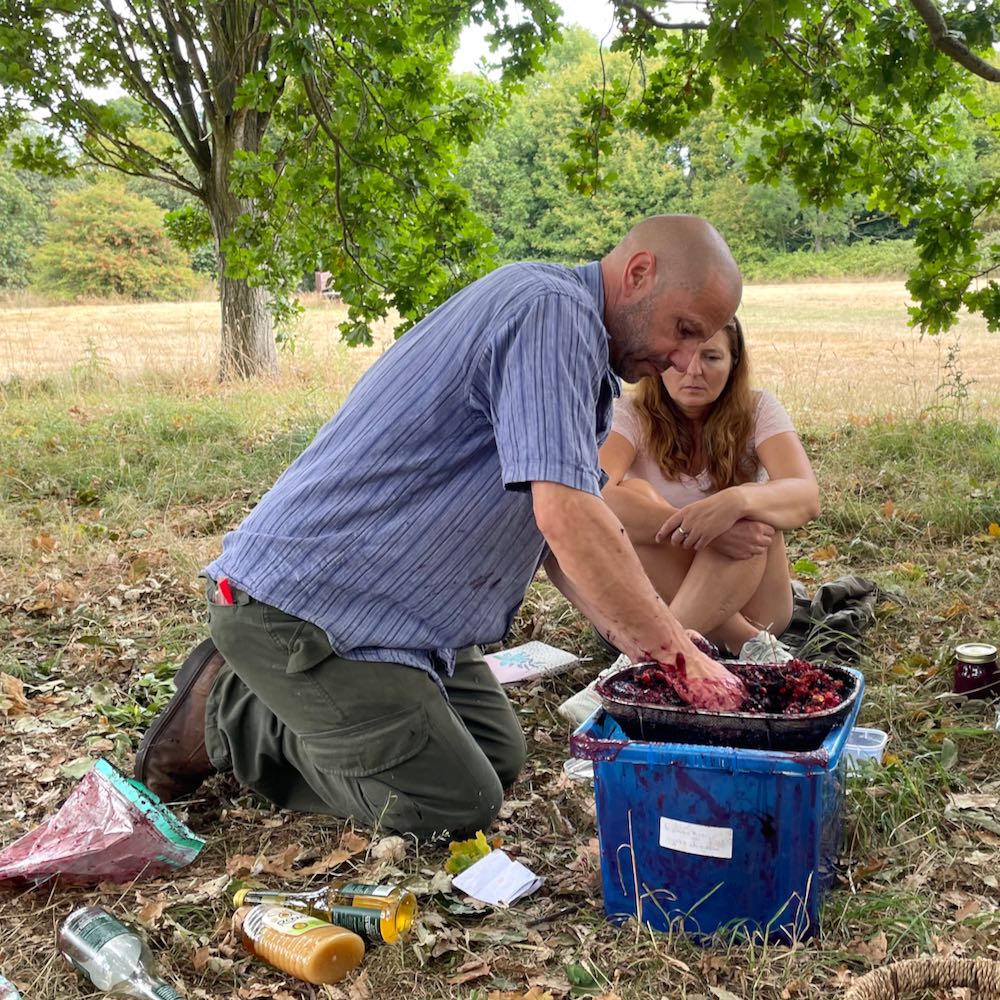
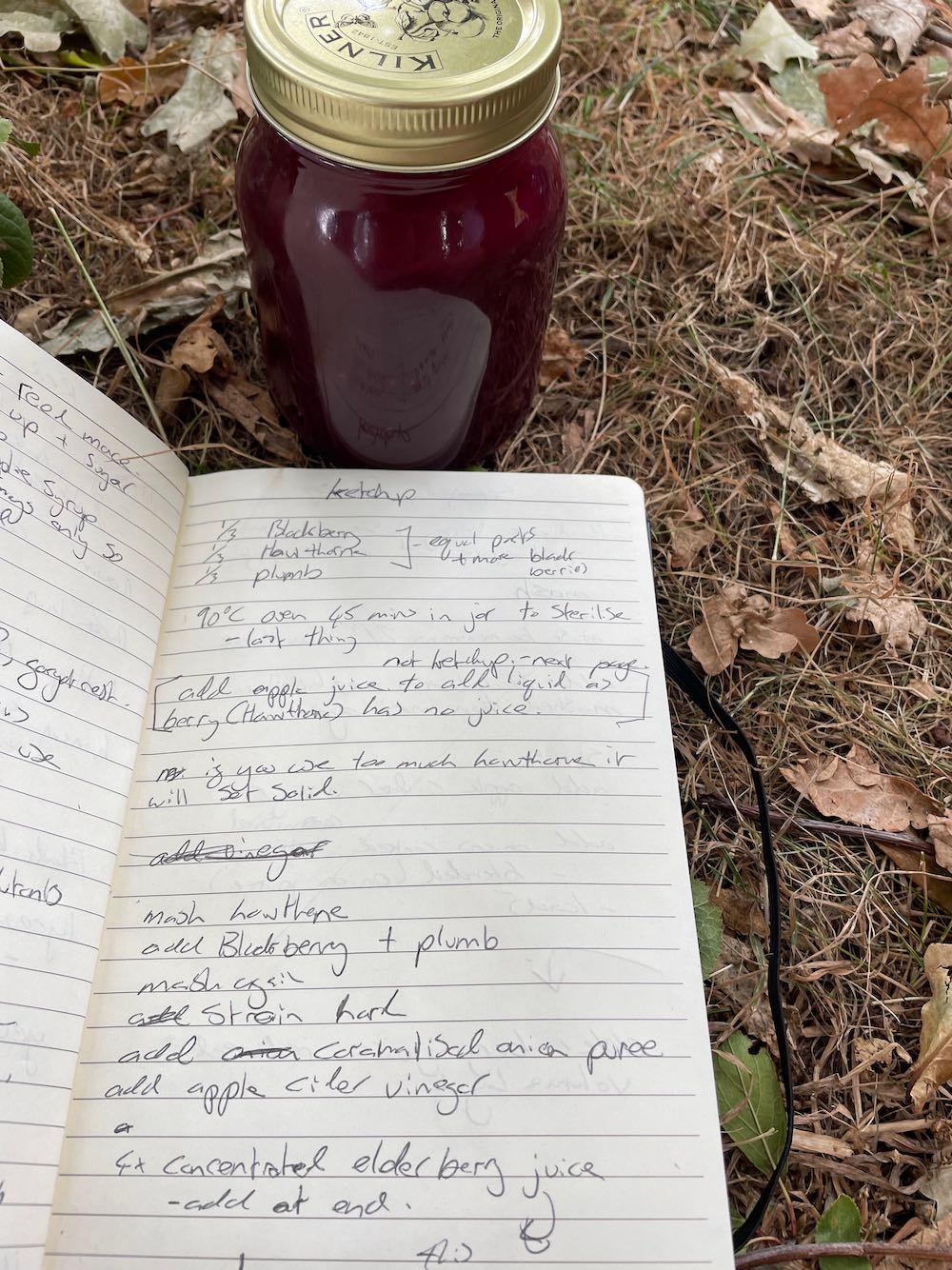
Hawthorn Set Jelly
Ingredients
- Berries
- ⅔ Hawthorn
- ⅓ Blackberry
- Apple juice
- Honey
Method
- Mash the berries!
- Strain the berries!
- Add apple juice - quantity unknown
- Add Honey
- Place mixture in a jelly container
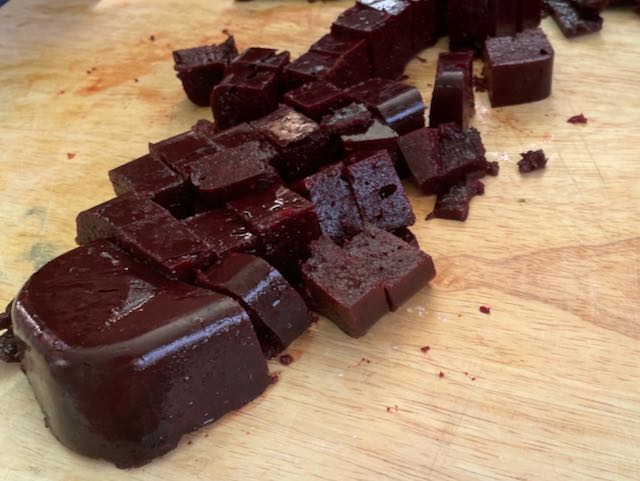
The picture was taken at lunch by which time the jelly had set. More on this soon. Also, the hawthorn must be at least two thirds of the mixture else the jelly won’t set.
Seaweed
Once the food had been made we moved on to the sea. 15 minutes down the road we head to Herne bay by Reculver where I ended up staying the night. As before, we surrounded Fergus and he emptied his backpack of goodies. First up was dried dulce which Fergus has had since 2007. It tasted great, a little salty but I guess that was to be expected. He then recommended the book Seaweeds of Britain and Ireland by Frances StP D Bunker which categorises the seaweeds into red, brown, and green. Most are red and edible apparently!
The next seaweed surprise was home made nori sheets! Now this is notoriously hard to make I’ve been told but it can be made from the seaweed in the UK. The species were looking for is laver, as in what’s used in welsh laver bread which has a very thin brown cling film like look to it. Again, it tasted great. A few more goodies and we were off looking for four species of seaweed to cook in the evening. These were, serrated and bladder wrack, sea lettuce, and gutweed. Gutweed is what is used in chinese takeaway restaurants as crispy seaweed. A childhood favourite of mine :) Below shows the fruits of our labour and the only picture of me from the whole day where I seem to have taken the form of Quasimodo…
After we had collected all the seaweed a few of us went back into the sea and washed them. I took the sea lettuce and later found out that I had a done a terrible job as when we cooked it up, it was full of sand. Everyone was unhappy, especially as it was supposed to be the tastiest.. Fortunately for me, no one remembered it was I who washed it and I never told a soul. Sorry guys.
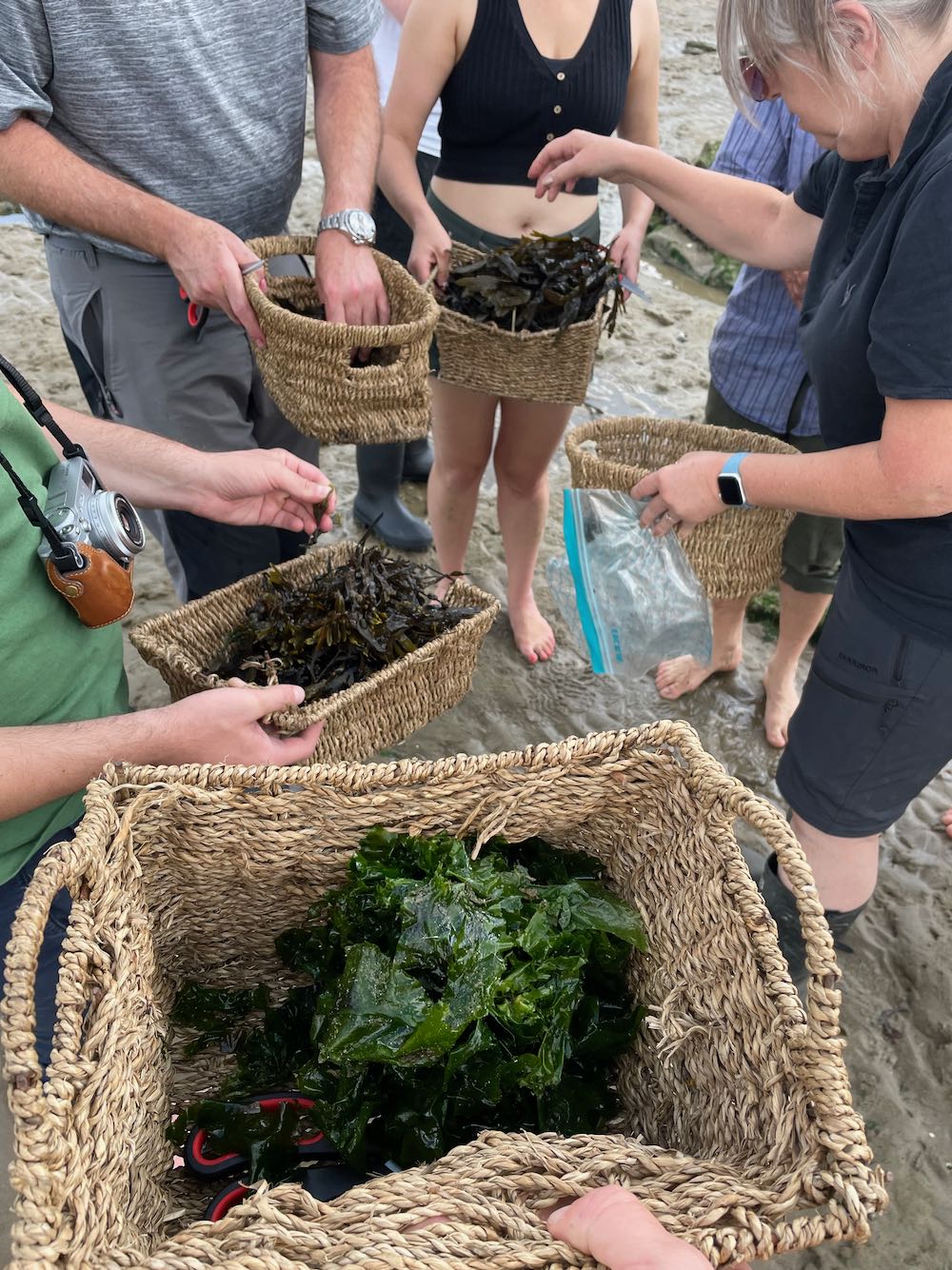
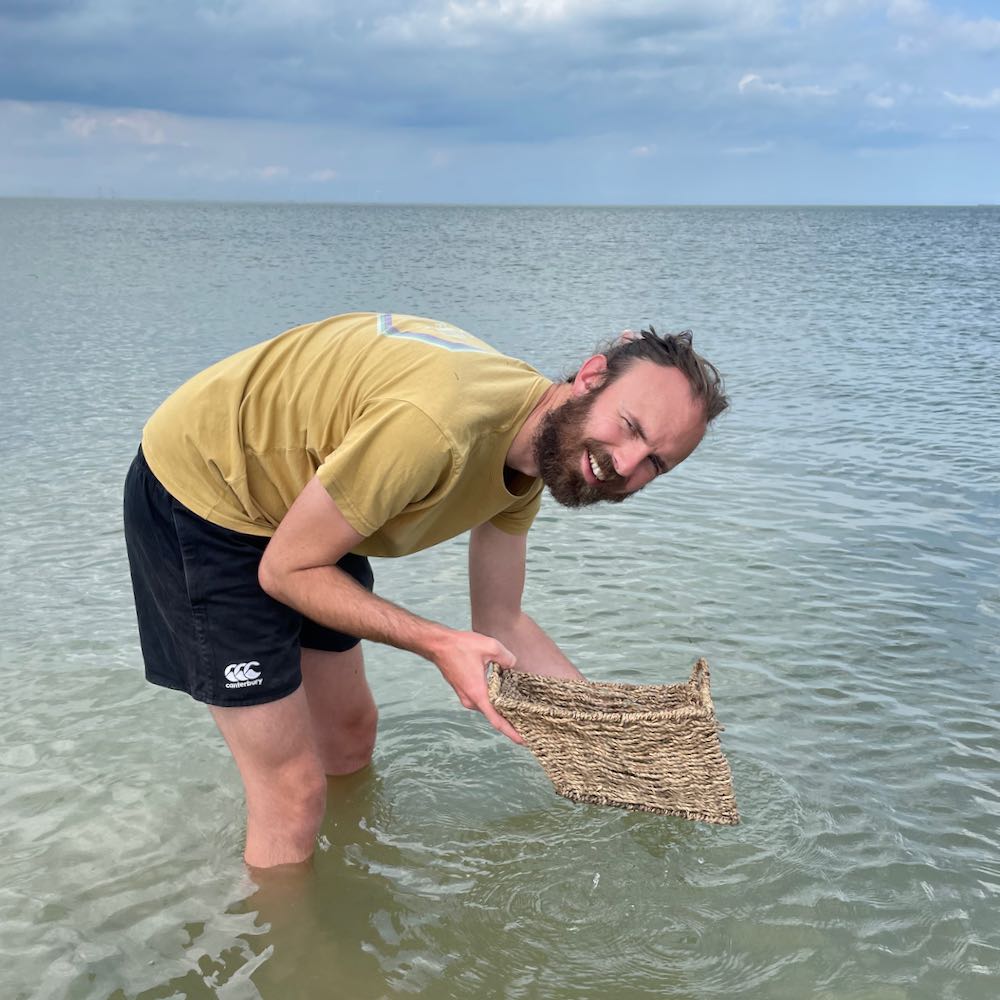
Lunch
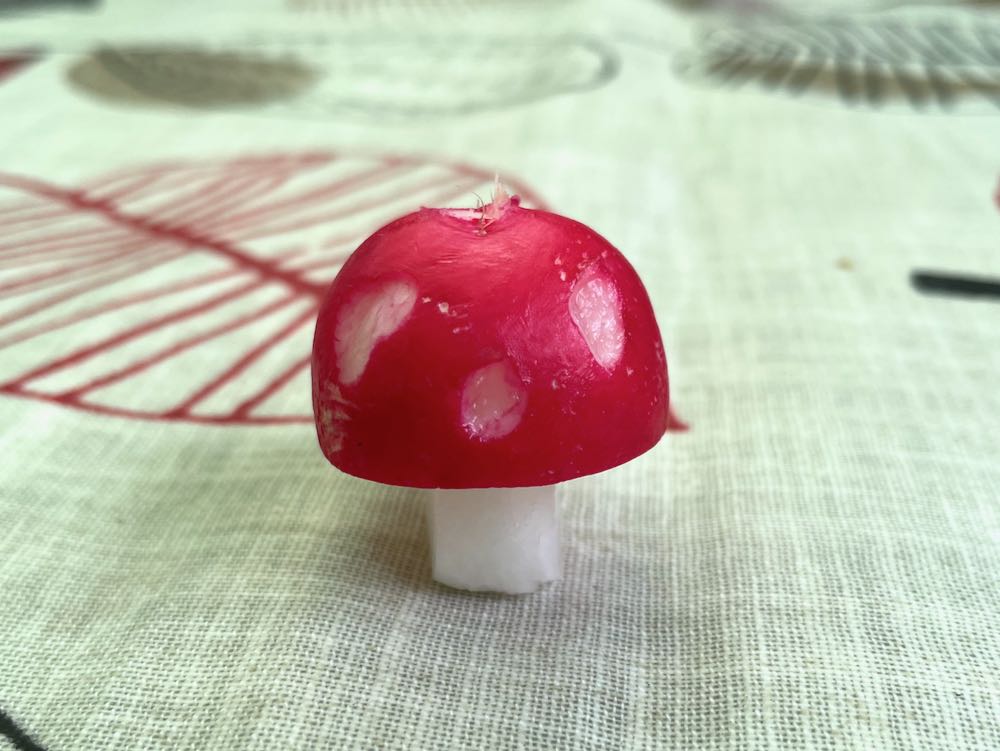
After, the courses of food started coming and they just kept coming. Fergus had gone out that morning and collected lots of greens from the local area to make a soup which he served with nice bread and lacto fermeneted wild garlic. I cannot wait to make buckets and buckets of this stuff next wild garlic season.
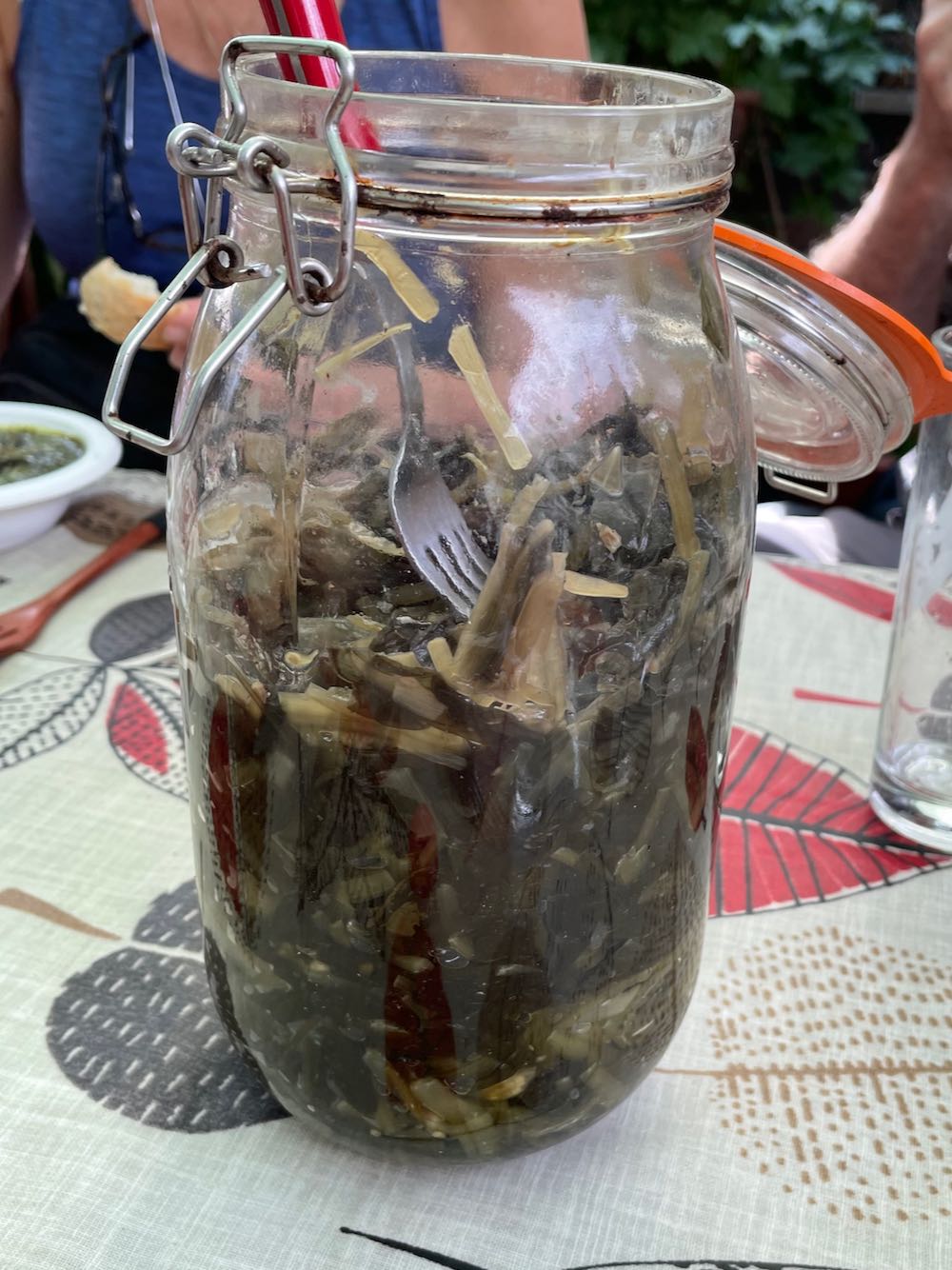
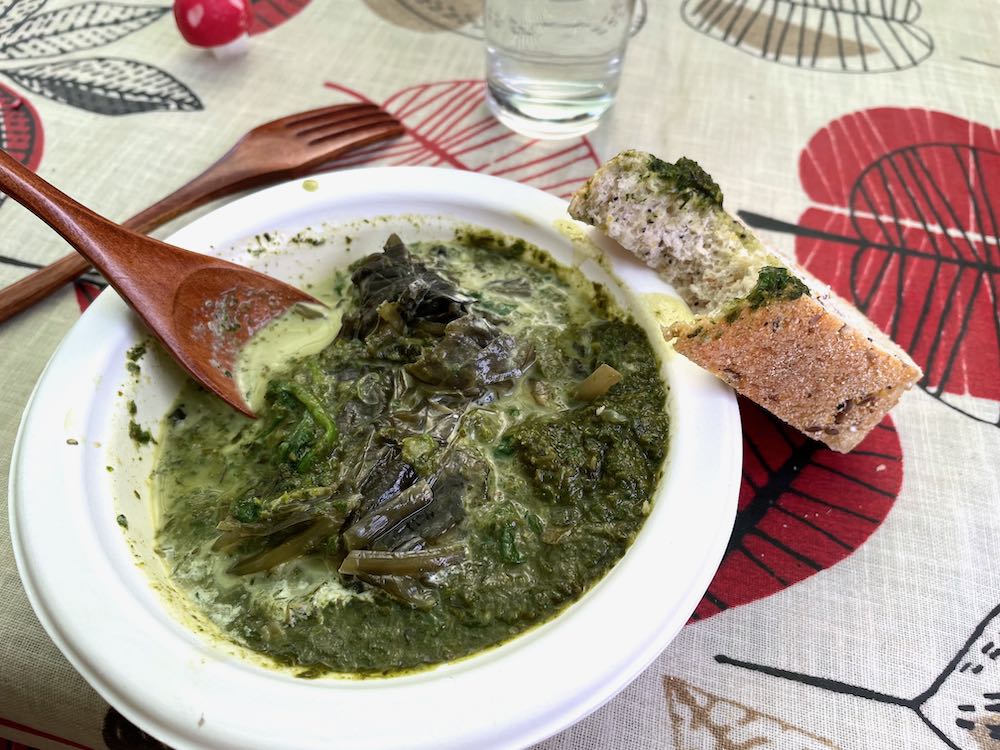
Into the main. Out comes the mega salad followed by dot leave potato rolls. I think it was potato? What I really wish is that I wasn’t writing this two months after the day but I’m a busy guy… And it’s summer. I want to plaaaaaaay. I load my plate up with a little bit at a time and slowly delve into the salad eventually amounting to three or four full plates. One of the more interesting sides to accompany the salad was bracken. Now bracken apparently is a pretty dangerous plant to eat. It absorbs heavy metals and is known to be quite carcinogenic, however, if prepared properly, it is safe to eat. How do you prepare it properly? Well, first you bring a lot of water to the boil, add the bracken for several minutes and then change the water and repeat the process. You repeat this process about 30 times or something ridiculous like this until the heavy metals are drawn out. I have no idea how you know when this is done. I suspect Fergus doesn’t either, hence, 30 changes of water. What did it taste like? Bloody lovely.
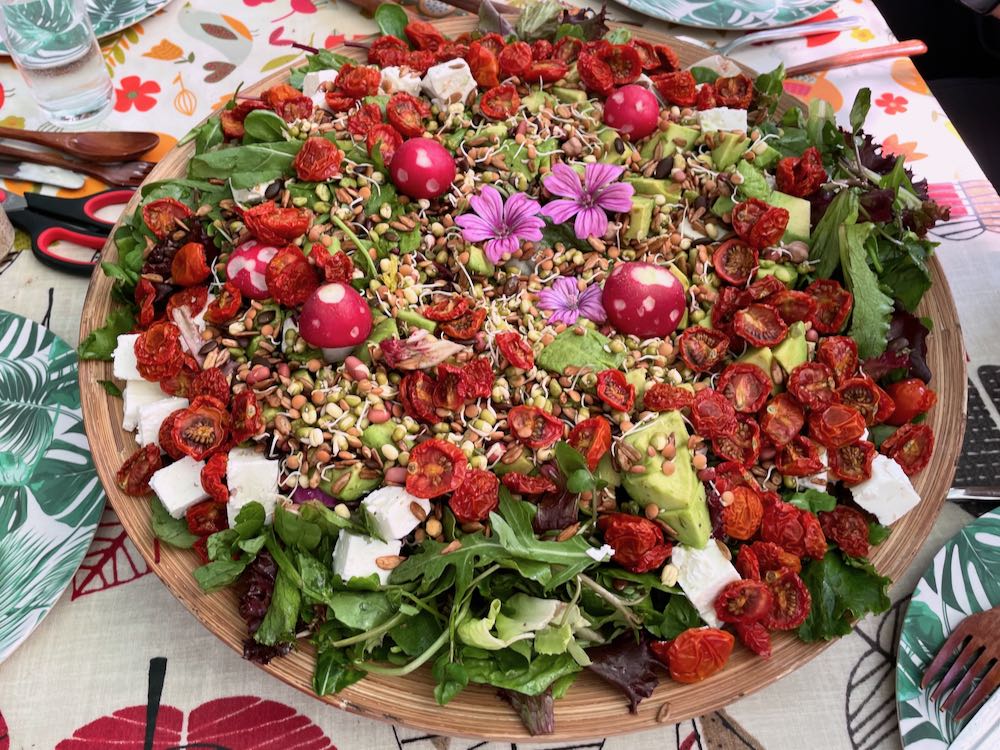
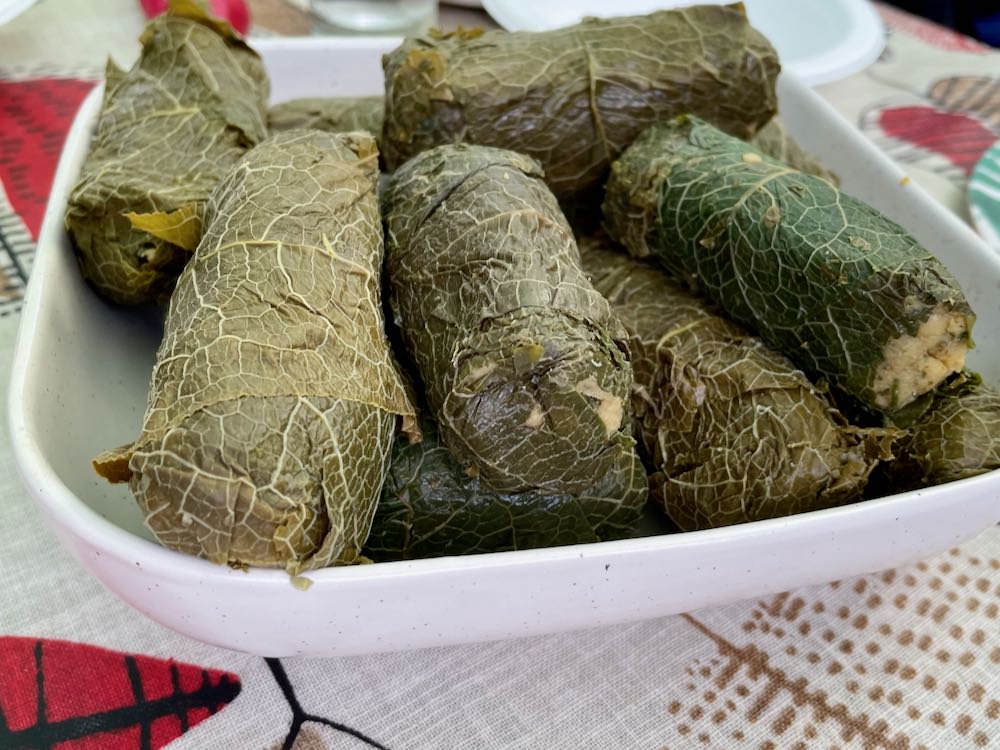
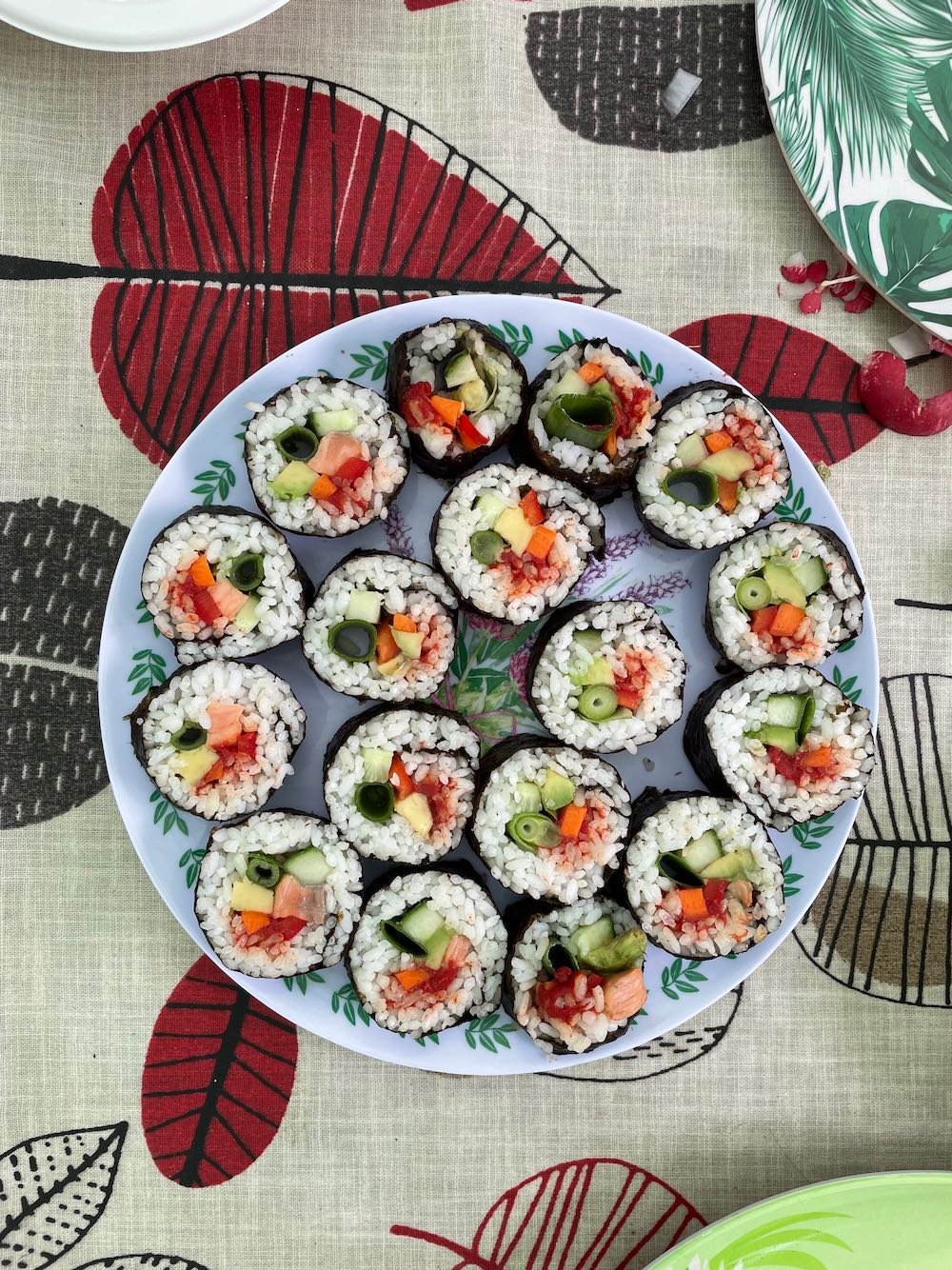
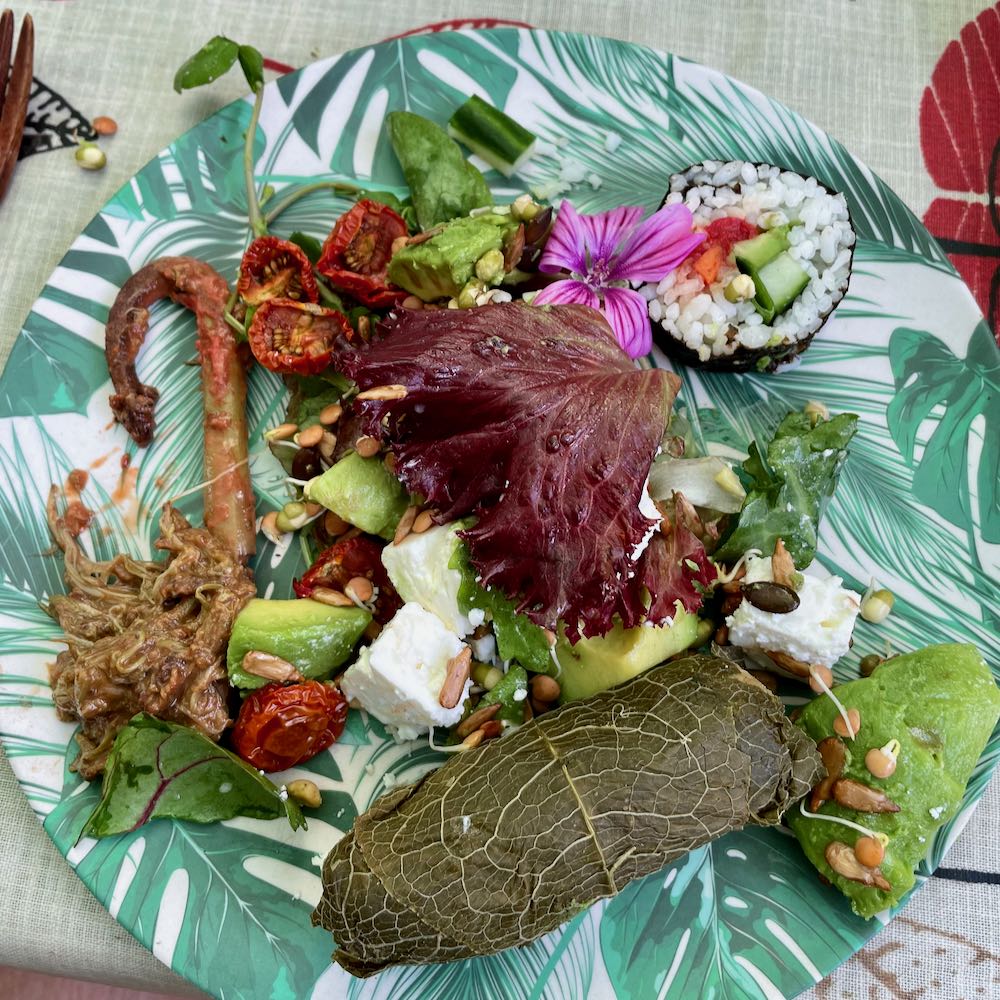
Finally, desert. Earlier in the day we had made the Hawthorne and Blackberry set and now was it’s time to shine. Panna cotta infused with seaweed which gives it that green look served up with cashew chocolate ice cream, passion fruit from Fergus' mums garden, and the set jelly. I’m full. I’m happy. I’m about to go and forage for another 6 hours. Jesus. To the salt marsh!
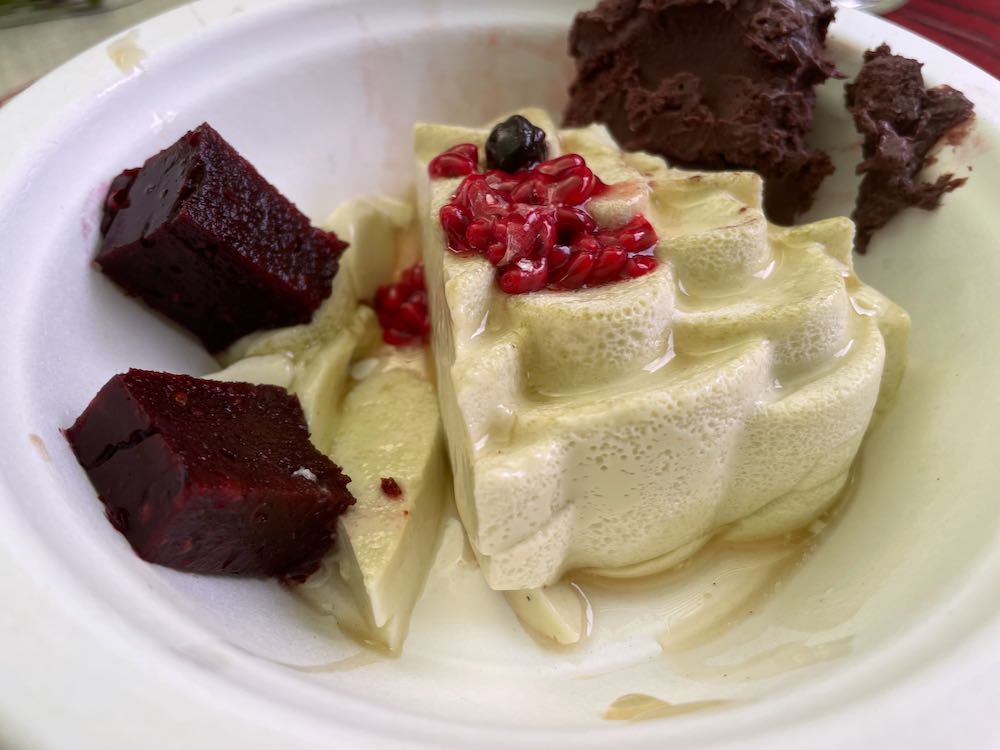
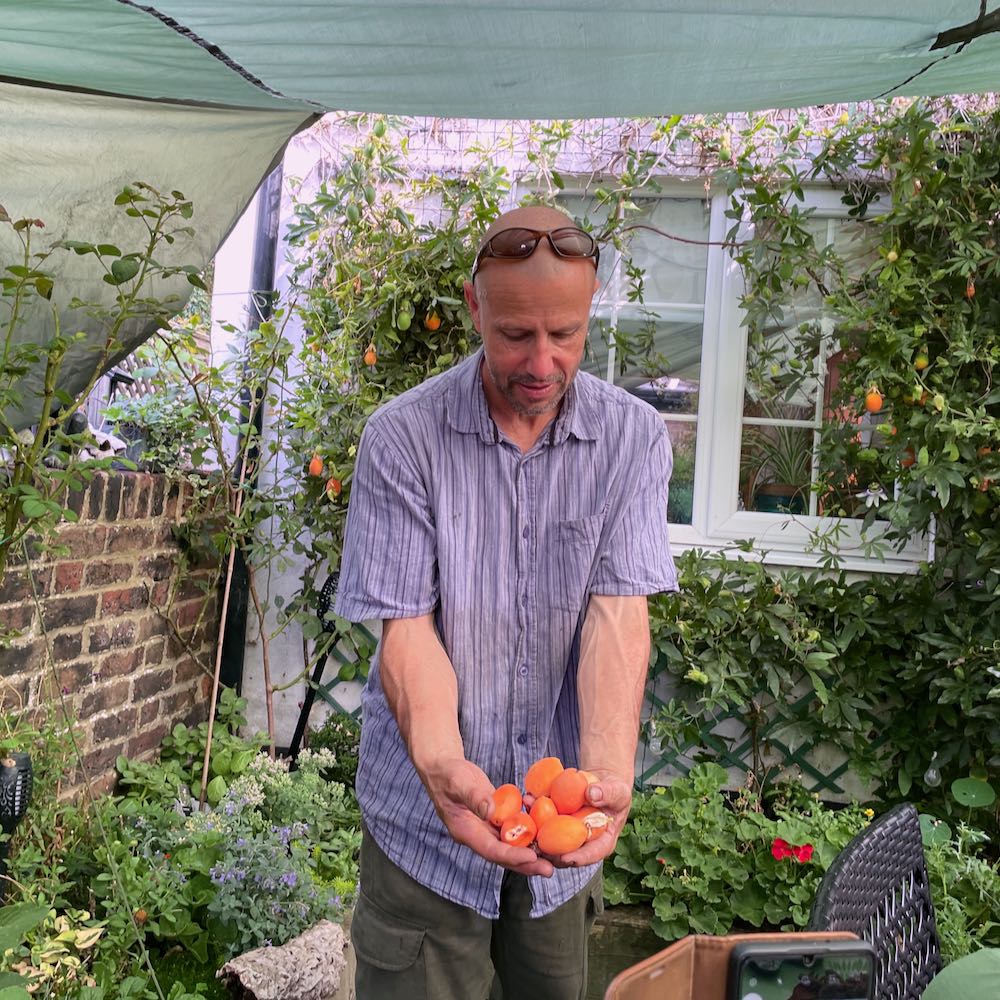
Side note - lacto fermeneted wild garlic recipe
For each kilogram of wild garlic add a desert spoon of salt to a container and let the salt draw out the water. Once the water has been drawn out, add to a kilner jar and let ferment!
Journey to the Salt Marsh
The salt marsh was roughly a 20 minute drive from lunch and was a welcomed digestion break. We rocked up and started our walk to the salt marsh which as expected took a very long time as Fergus was bursting with excitement at absolutely everything we came across. Within 10 meters of leaving the cars we came across a birch and a sycamore tree and on queue, Fergus opened up his backpack of wonders and showed let the group sample some of his home made birch and Sycamore syrup. Tapping of a tree should be done over winter with January being the best month for it. The “classic” method of tapping a tree is to drill a hole into its trunk and drive in a piece of pipe down to a vessel of some sort. This leaves the tree vulnerable to fungal infections and disease which isn’t very nice when there is an alternative method that is much friendlier. Simply cut a branch and hang a 2 litre bottle off the end of it. Do this to several branches as you’re going to need a lot of sap water! To make a syrup from these trees the sap water must be reduced by 100:1 for the birch sap water and 78:1 for the sycamore sap water! The sap water in itself tastes like slightly sugared water.
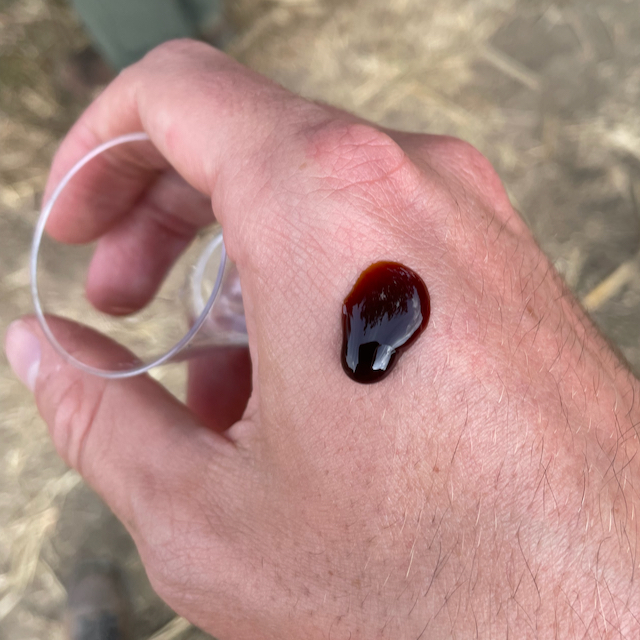
Birch Syrup
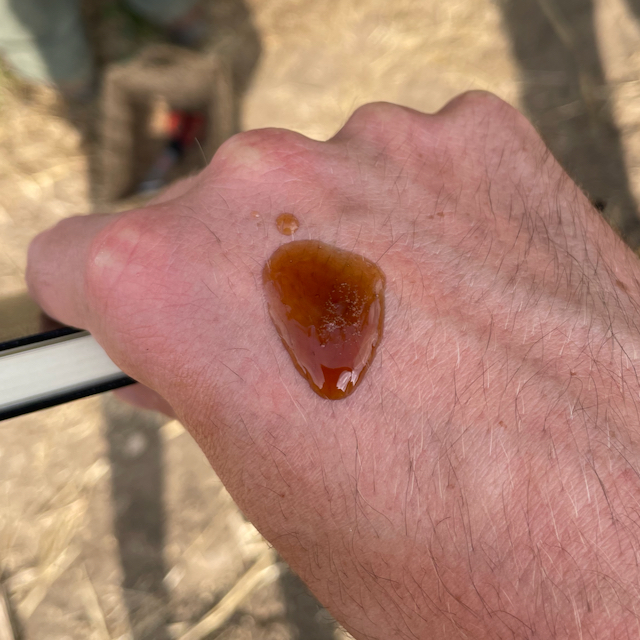
Sycamore Syrup
The tree tapping discussion concluded with a surprise! Fergus had concocted a Michelin star esque delicacy. He had coated a Sycamore seed with syrup he had made from a sycamore tree with a goal of making the whole seed edible. In the end the part of the seed connecting to the tree couldn’t be eaten but imagine this being served to you on some ice cream. I would be so hyped!
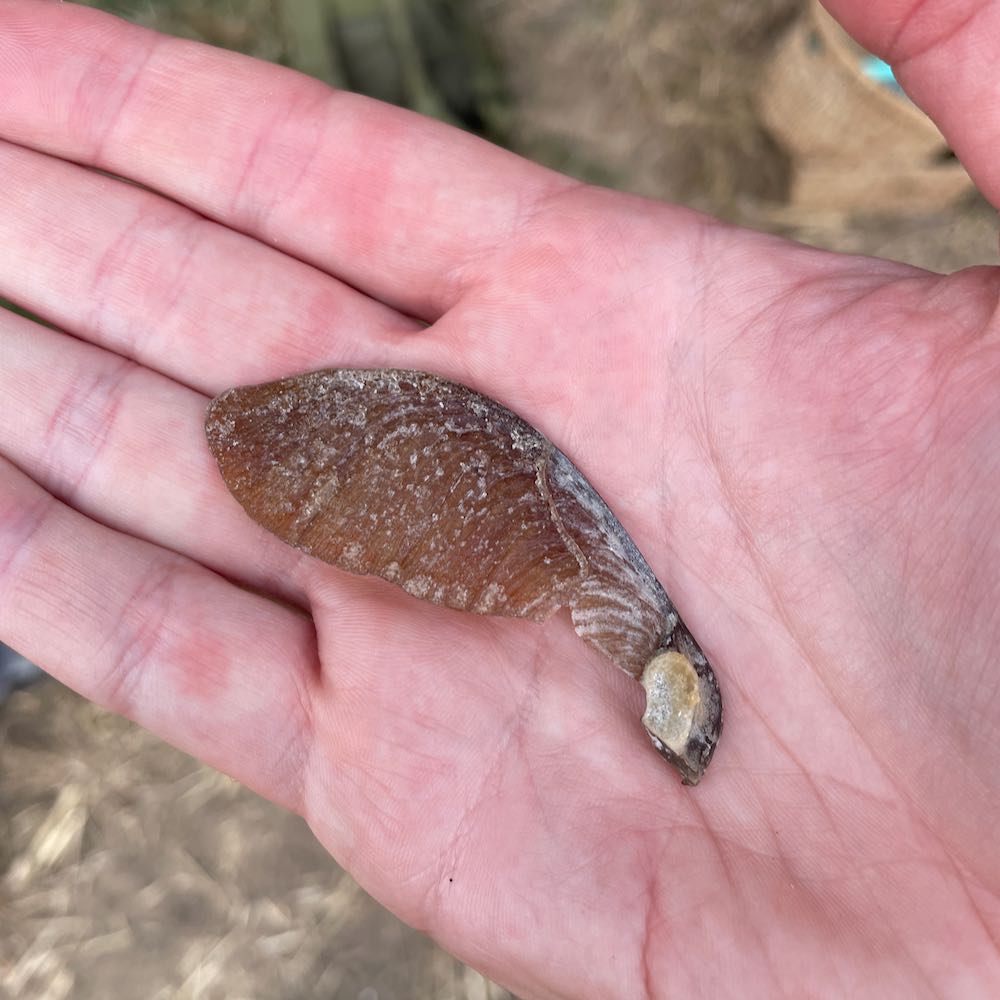
Sycamore Sap Crystallised on a Sycamore Seed
Salt Marsh
In the salt marsh we were told to search for four different plants that would make up the greens in our evening meal. They were sea purslane, samphire, sea aster, and one other that I have seemed to have forgotten to write down. I actually think it was the leaves and unopened flower buds of the sea aster plant. Fergus gave the introduction to the plants whilst simultaneously munching on some sea purslane. A word of warning regarding marshland plants is that they like to absorb heavy metals which means you cant eat them very often or you’ll end up giving yourself arsenic poisoning… so be careful and consume in moderation!

I collected and ate as much samphire as I could and ignored the fact that the place was clearly a popular dog walking spot. In my broken basket you can see samphire on top and sea aster below separated by my black notebook.
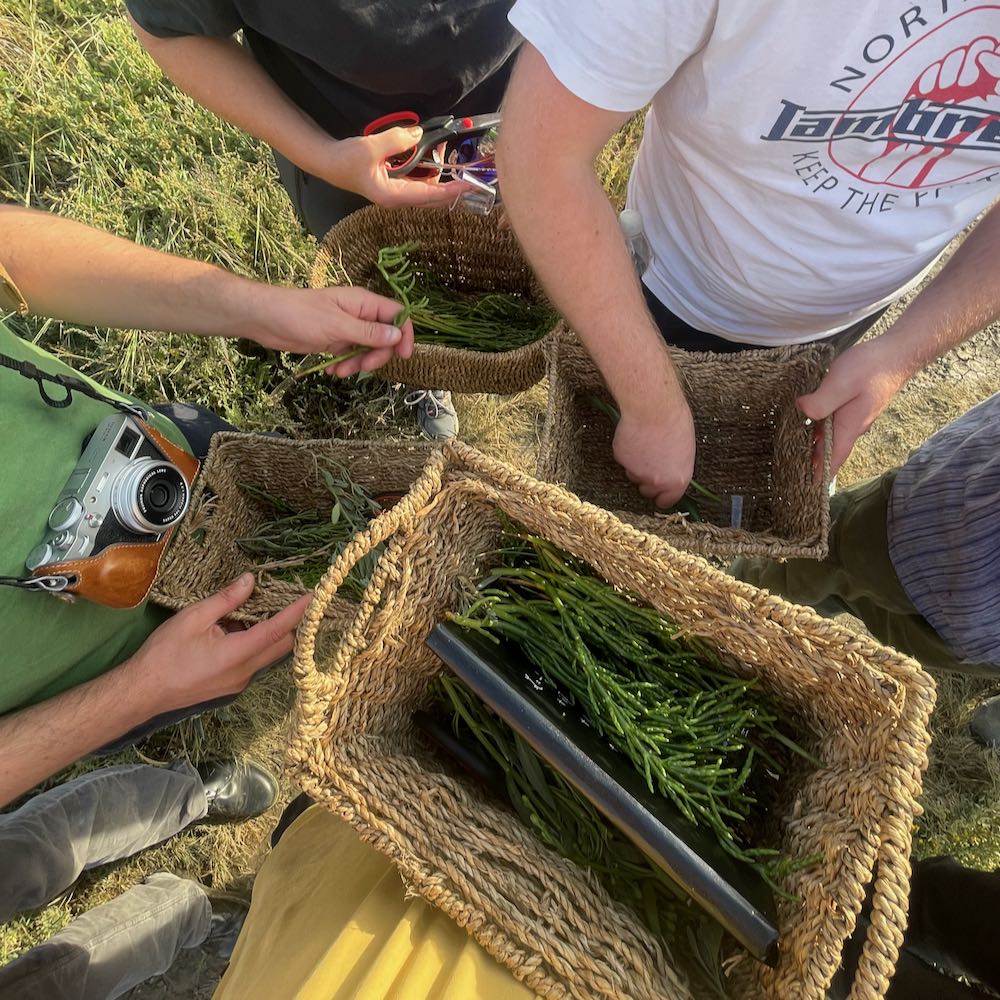
After all was foraged and stomachs were full we continued on our walk collecting anything we spotted along the way. Apples, blackberries, rose hip, sea spinach, and so on. We chatted to the locals who had been to a local hops festival and watched a small dog carry a log several times the size of itself along the coastal path. Spirits were high, food was aplenty but after around 20 minutes of walking Fergus realised he’d left his end of foraging surprise drink somewhere. Weirdly, I knew exactly where it was but what I didn’t remember was how far away it was. We were fairly pushed for time and we still had the supper to cook with all the food we had foraged throughout the day. I ran back to where Fergus had found the sea spinach which was easily a mile away and then ran back. I was a hot sweaty mess and a little stressed as this drink was ready to explode. It turns out the victory drink was sweet chestnut champagne! The male flowering part of the sweet chestnut is known as the catkin and if collected during full flower and added to water it will self ferment into champagne or if we’re being correct(lame), sparkling wine.
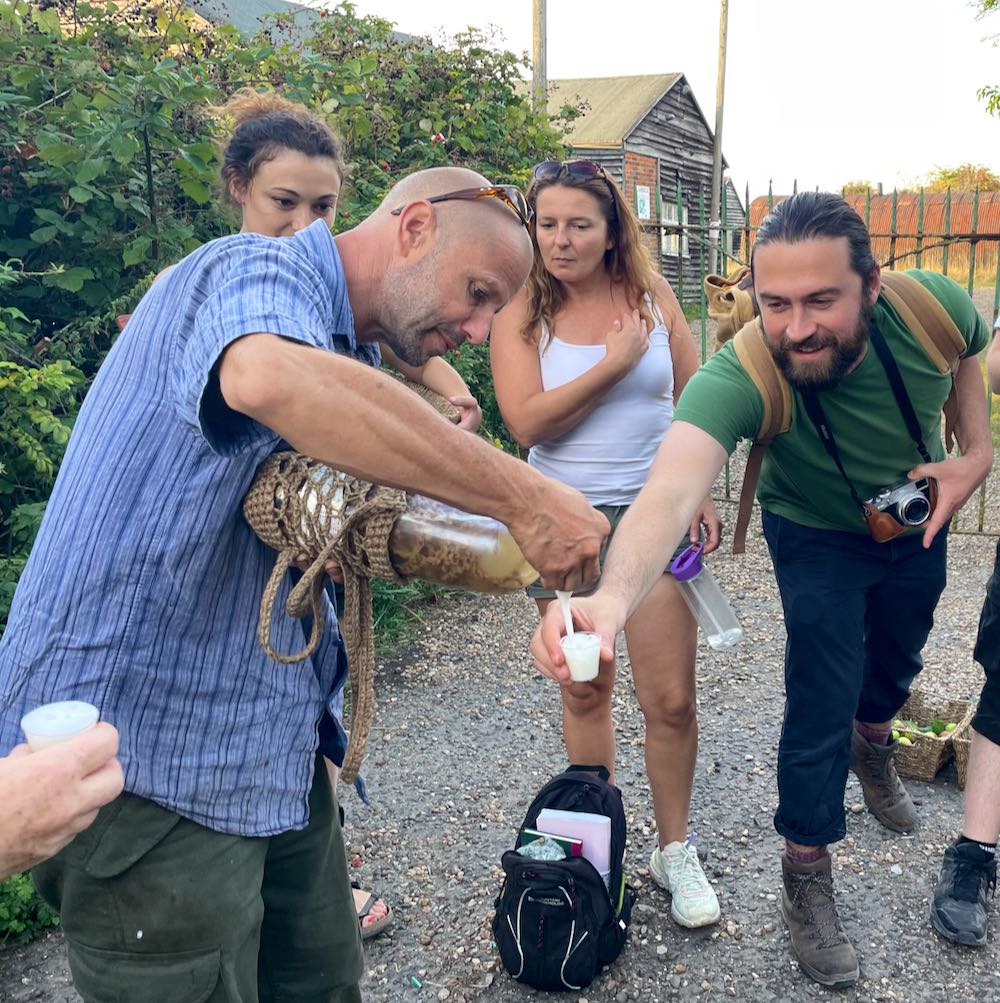
Supper
To Reculver bay we go! Supper for the evening is deep fried seaweed followed by foraged greens and local fish fried in turmeric. Before all that though I ran down to beach and jumped in the sea in dramatic fashion and cleansed myself of post run sweat. After my swim we got down to business. Holes were dug, fires were lit and food was cooked. First up was the deep fried seaweed which after a brief explanation of the danger of deep drying sea weed on the beach, Fergus burned himself with hot oil and had to go sit in the sea. All the seaweed tasted amazing apart from the sea lettuce which I collected as It was full of sand as I hadn’t cleaned it very well. This was then followed by the greens, fish, and foraged green pakoras. The fish was burnt and didn’t taste great but that might be down to me not really liking things cooked in lots of turmeric. The greens, however, were delicious! absolutely banging! I should have just had a whole plate of them. finally, a makeshift crumble had been made from the apples, blackberrys, and rose hips. Now, to prepare a rose hip you have to remove the skin and stone and only use the flesh. I teamed up with a chef who was on the course to prepare the rose hips and what a pain it is. I dont think I’ll be doing it again any time soon.
After, I drove a few people back to the train station, came back to the beach and slept in Sam’s citroen lam-berlingo. What a brilliant day.
